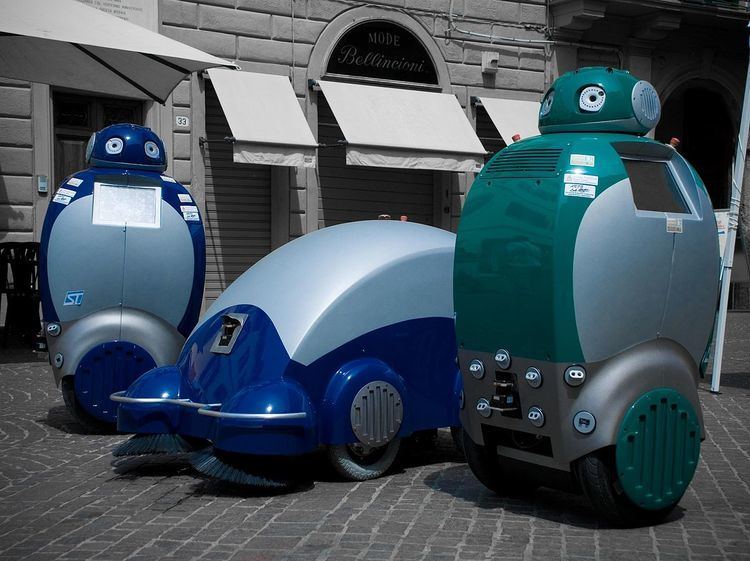Launch year 2009 | ||
 | ||
Dustbot is a robot that can collect garbage from homes. It can be summoned by phone call or SMS, and uses GPS to automatically make its way to the customer, collect the rubbish, and take it to a dustbin. In addition, the Dustbots carry environmental sensors to monitor the pollution levels over, for example, a pedestrian area. Prototypes have been tested in Italy, in Sweden, in Korea and Japan, and it is due for launch in 2009. The Dustbot project is funded by the European Commission.
Contents
Testing and operation
Dustbot is allegedly the world's first robot that comes to take away rubbish from a residence upon request. It can be summoned to an address by phone or SMS at any time of the day. The caller’s position is calculated and the Dustbot is dispatched. When the robot arrives "you use the robots display board to enter what sort of trash it is and then the robot carries it to a dust bin", said Matteo Reggente, one of the DustBot scientists. The DustBot then opens its bin, collects the trash and takes it to a designated area.
The Dustbot system, consisting of the DustCart and the DustClean robots, is designed to work in tight urban areas where large trucks find it difficult to operate, such as old European cities. It can work in narrow streets which are difficult for large refuse trucks to negotiate. The DustClean robot can also sweep, vacuum-clean and measure pollution.
Technical
The garbage bin of the Dustcart robot has a capacity of 40 kg.
Dustbot uses different localisation and uses GPS navigation combined with pre-loaded maps. It uses a gyroscope to keep it upright, and has ultrasonic, infrared and laser sensors to avoid collisions with static and dynamic obstacles.
It is able to monitor pollution through a number of air quality sensors, and can warn if the levels are too high. The key idea is to exploit robots that are primarily used for something else for pollution monitoring and/or detection of poisonous gases. This is especially important in the case of gases that humans cannot sense or when long-term exposure to slightly increased concentrations needs to be verified. The distribution of gases is modelled using statistical methods.
The Dustbot system communicates via a wireless network connected to both GPS and internet.
Two DustCart robots were deployed in the village of Peccioli, Tuscany, from June 15, 2010, to August 7, 2010, providing "door to door separate waste collection on demand". The system was found to be easy to use, providing satisfactory service and increasing recycling. Its main weaknesses were "slow service/traffic problems (and) low bin capacity", and also the existence of "barriers to entry", according to a report by Nicola Canelli presented during ICT 2010 Conference Session, held in Bruxelles, September 27, 2010.
